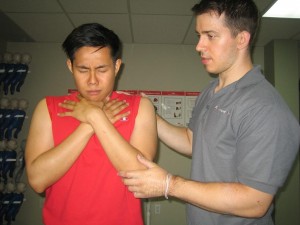
Unless you’re in healthcare, you probably will never have CPR training on the top of your to-do list. Over the several decades since CPR was first officially introduced in the 1960s. However, the history of mouth-to-mouth resuscitation and chest compressions go as far back as the early 1700s. CPR training involves more than just learning the skills, it involves a lot of concrete thinking and building your knowledge database on the basics of lifesaving skills.
We offer eight total programs on CPR, five training programs and three re-certification programs. All of them are available at the cheapest training fees in the state. Other providers cannot compete with the availability of our programs as well.
When should a rescuer give CPR?
CPR should only be started once the victim has been properly assessed and help has been called. Chest compressions and rescue breaths should be started if the victim is unresponsive, has no or irregular pulse, and exhibits agonal breathing. If there is a pulse, only mouth-to-mouth breaths can be done, otherwise, start with 30 compressions followed by 2 rescue breaths. Keep repeating the cycle of compressions and breaths until the arrival of medical help.
What is cardiac arrest?
Cardiac arrest is a term used to describe a heart that has stopped beating or is beating irregularly. The main characteristic of cardiac arrest is the inability of the heart to adequately pump blood to the rest of the body. In order to send blood to body, compressions manually pump the heart while rescue breaths oxygenate the blood. Since poor oxygenation of the body’s tissues is not due to decreased oxygen content of the blood, giving compressions is much more important than giving rescue breaths (in adults; giving CPR to children has very different principles).
How do I know which course to sign up for with CPR Course in Seattle?
At Seattle CPR, we categorize our courses into basic (Basic Life Support) and advanced (Advanced Life Support) training. Basic courses can be taken by the general public as well healthcare providers (HCPs). Advanced courses are only for HCPs, with a list of requirements that trainees need to accomplish before beginning training.
Requirements
For the basic courses, there are no requirements. However, for advanced courses, the HCPs are required to take take a pre-test and have a valid training certificate for the Basic Life Support for HCPs program.
Certificates
Upon completing all the requirements and the training program, we award students with a training certificate that expires after 2 years. However, we allow rescuers to renew them for an additional 2 years through a re-certification class.
Note: Only rescuers whose credentials have not expired yet can take a re-certification class. If your certificate has expired, you have to retake the training program to get a new certificate.
Programs available
- Basic CPR (general public)
- Basic CPR C (HCPs)
- Basic Life Support for HCPs*
- Advanced Cardiac Life Support (ACLS)*
- Pediatric Advanced Life Support (PALS)*
*Re-certification available
